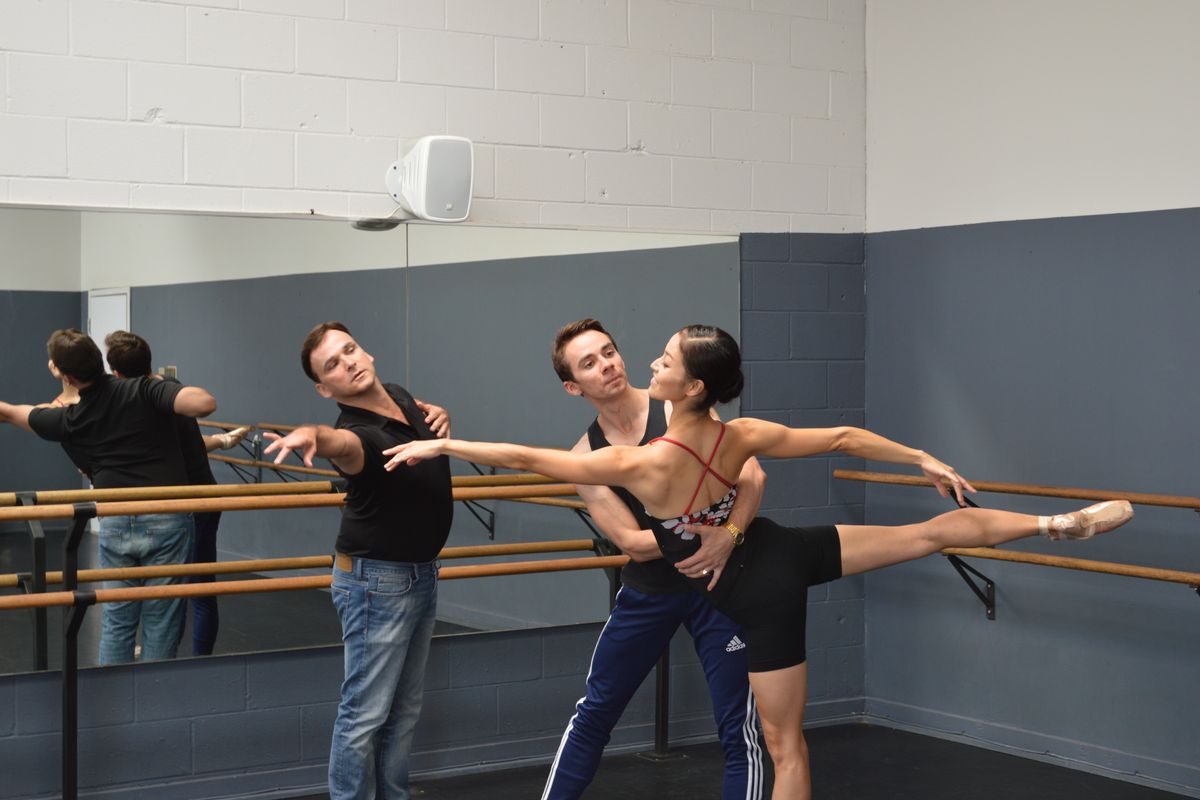Kicking Their Heels in Cow Town: Oklahoma City Ballet Director Robert Mills Is Building a Company He'd Want to Dance For
This story originally appeared in the October/November 2015 issue of
Pointe.
Some might call it bravado. Others would say fightin’ spirit. When Robert Mills grabbed the reins of a struggling Ballet Oklahoma in 2008, the company was at a crossroads: To sink under a $400,000 deficit or to merge with Tulsa Ballet.
“I wanted to show them what ballet could really do for this community,” says Mills of how he approached the city’s heavy hitters with a third option. His stump speech—“Why Oklahoma City Needs Its Own Ballet Company”—helped pull the organization back from the brink.
After off-loading some company property to settle the debt—a costume warehouse, as well as their studios, which were sold to an energy company that is ultimately donating space back to them—Mills started fresh. The troupe got a new name, Oklahoma City Ballet, and a new mission.
“We shifted from trying to win back old audiences to building new ones,” he says. “Yes, we still do traditional. But when we added new titles like The Wizard of Oz and The Phantom of the Opera, people started coming even if they didn’t know ballet.”
In the past seven years, Oklahoma City Ballet has expanded from 16 to 37 dancers. Its $1 million budget has grown to $3.4 million. Annual box office receipts have nearly doubled in the last two seasons, from $687,000 to $1.2 million, and about 300 students take classes in the company’s American Ballet Theatre–accredited school.
 Miki Kawamura and Alvin Tovstogray in Robert Mills’ “Romeo and Juliet.” Photo by Scotty Vo, Courtesy OKCB.
Miki Kawamura and Alvin Tovstogray in Robert Mills’ “Romeo and Juliet.” Photo by Scotty Vo, Courtesy OKCB.
The repertoire is evolving, too. Starting this season, Mills has added a contemporary triple bill, enabling him to include more work by guest choreographers, like Matthew Neenan, Amy Seiwert and Helen Pickett.
Mills, 45, wants to nurture his dancers’ creativity. “I’m creating a company that I would want to dance in,” he says. “I was never 100 percent satisfied. So it’s important to me that my dancers take ownership of their roles.”
Growing up in Indiana, Mills’ early interest in gymnastics grew into a craving for jazz, tap and contemporary training. On Saturdays, he would commute to Chicago for ballet. He studied modern briefly at Columbia College Chicago, where he was encouraged to pursue a ballet career. He left school for a job at the Milwaukee Ballet and then Pennsylvania Ballet. But he wasn’t satisfied in the ranks of those companies. He moved on, landing better roles at troupes such as Tulsa Ballet, Oklahoma City Ballet, Kansas City Ballet and Ballet Idaho. His 17-year dance career introduced him to a wide variety of choreographers and styles.
The current OKCB, too, is a melting pot of dancers and artistic choices. Russian-trained, Ukrainian-born principal Alvin Tovstogray, 23, says that working here, he’s had to find a stylistic middle ground. “Robert likes to say, ‘This is America! You have to do everything!’ ” he says.
Principal Miki Kawamura, 35, who moved to the States from Japan in 2000 and has been with Oklahoma City Ballet for five seasons, says that Mills expects a clean technique.
“But he’s not just looking for a pretty line. He likes dancers who can really move.”
Mills choreographs one or two works each season, and ballet master Jacob Sparso has a knack for popular story ballets, like The Wizard of Oz. “People identify with it,” jokes Mills about Oklahoma City’s location in tornado alley. “But really, Jacob and I have in-depth conversations about every ballet. We’re not only concerned about who should be in what role, we are also trying to build an audience.”
Critics have praised the accessible repertoire and the strength of the corps de ballet in particular. In 2013, when Mills debuted his Swan Lake, the Oklahoman called the company “a strong artistic force in the state.”
And outside the state, OKCB is touting its contemporary bona fides. At this year’s Spring to Dance Festival in St. Louis, Mills brought Stanton Welch’s Play. The manic, highly improvisational ballet set to electronica by Moby underscores Mills’ emphasis in his classes: channeling and releasing energy.
“I work a lot with the release and isolation of movement,” Mills says. “At barre, I’ll have the dancers completely relax the outside arm while working with the legs. Or we’ll practice releasing tension in different parts of the body. Contemporary dance is less about shapes and more about movement. So I’m always working with this idea of finding your home base, coming away from it and then moving back to it.”
In a town best known for oilmen, cowboys and sports junkies, Mills has managed to find success—and a home base—of his own.
Audition Advice
“More than anything, I like people who look me in the eyes,” Mills says. “Right away, I can see what kind of dancer they are going to be onstage. I want a body that is a blank slate, absent of affectation, but I don’t want a blank mind. I tell my dancers: View art.
Oklahoma City Ballet At a Glance
-
Number of dancers:
37 (including 12 apprentices) -
Length of contract:
30 weeks -
Starting salary:
$525 per week (corps de ballet) -
Performances per year:
30+ -
Website:
okcballet.com





